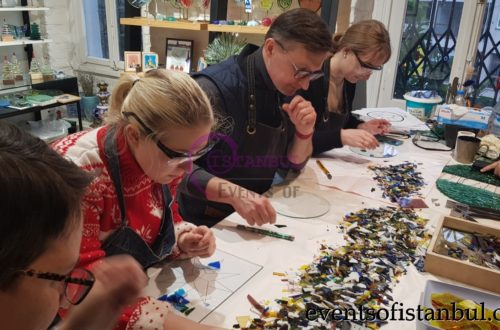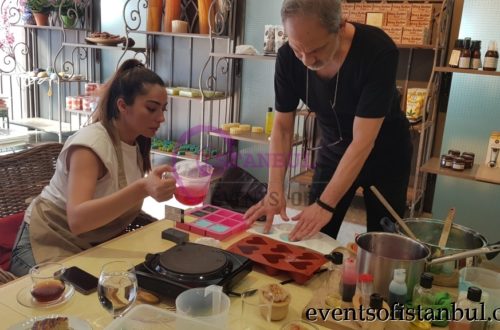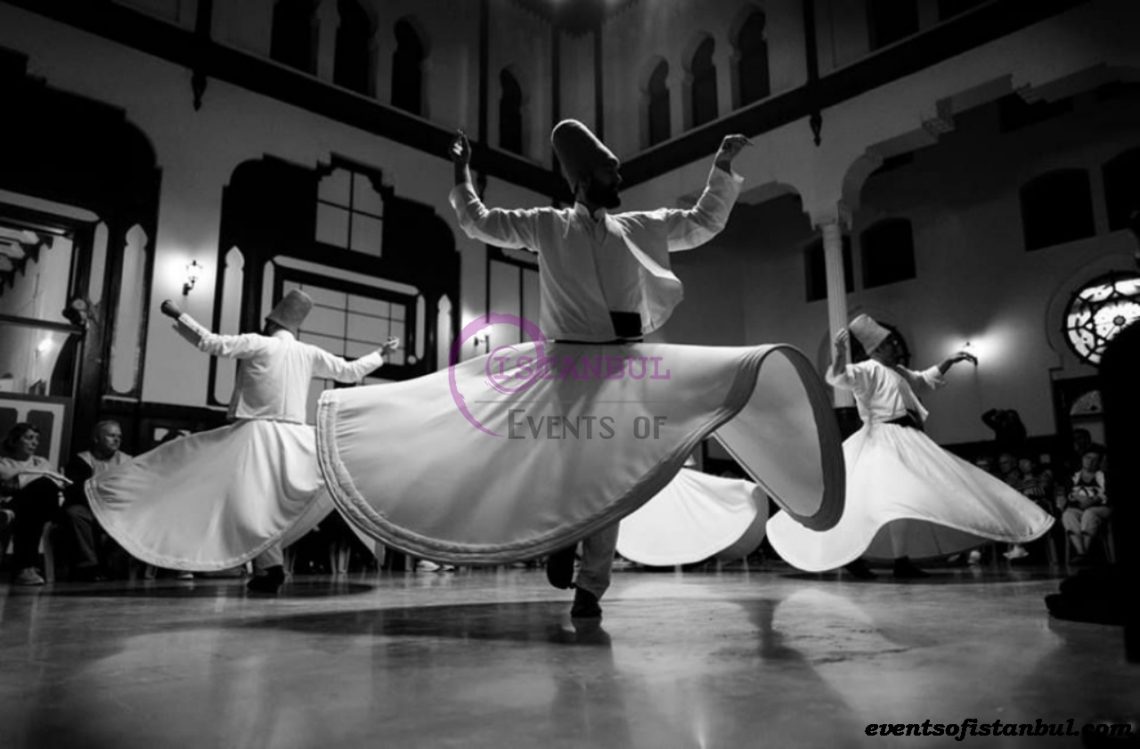
Whirling Dervish Dance Workshop
Whirling Dervish Dance Workshop. Learn how to whirl like a Dervish.
Duration: 1 hour
Location: Sultanahmet / ISTANBUL
Lesson Teachings: available in English, French, Russian, Turkish
Overview ;
The Whirling Dervish Dance / Zikr is a ritual that tries to get closer to god. There is a discipline to follow and there are methods. With the assistance of our Whirling Dervish, we will try to explain, show and teach you the techniques.
- Learn to do Whirling Dance in Istanbul
- Learn about Sufism
- Learn about Mevlana Celaleddin Rumi
What is Included ;
- In our lessons; we will try to teach you how to whirl like a Dervish.
- Dance studio – Workshop Area.
- Turkish Tea & Water
Meeting Point ;
Here is our Studio Address ;
Google Maps : https://goo.gl/maps/uXuyRmELZsx
Events of Istanbul – Les Arts Turcs Art Studio
Alemdar Mh. Incili Cavus St.
No: 19 Floor : 3 (Behind The Underground Cistern)
Sultanahmet 34110
Istanbul, Turkey
Contact : Phone or Whatsapp : +90 544 220 10 22
E-mail : info@eventsofistanbul.com
Do you want to invite us for Dance Performance or Festivals ?
If you want, we can bring our Whirling Dervish and Sufi Group with musicians for your events and festivals in istanbul, turkey an all over the world. Please contact us.
info@eventsofistanbul.com 00905442201022
Online Lessons on Whirling Dervish Dance and Sufism
Yes we can do our lessons online using Zoom, Skype or Whatsapp. Please contact Us for details.
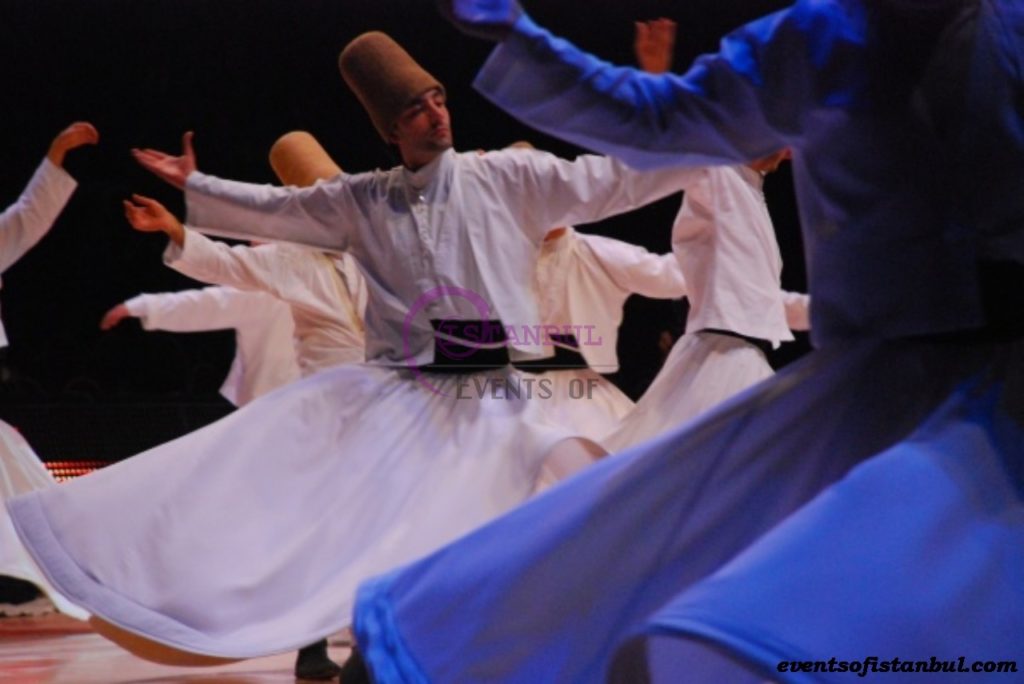
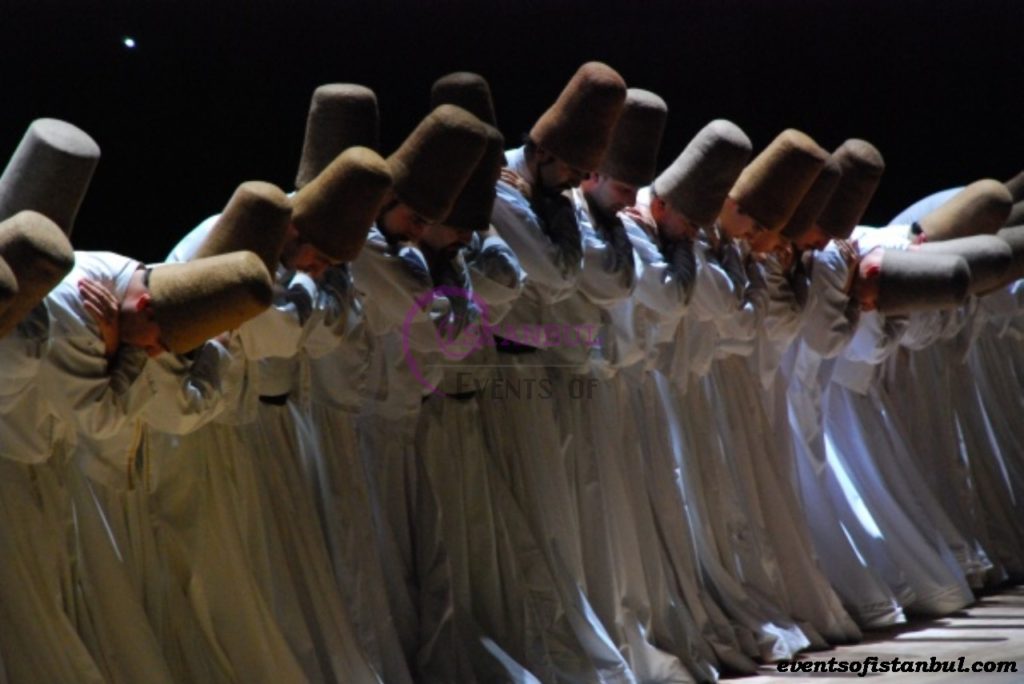

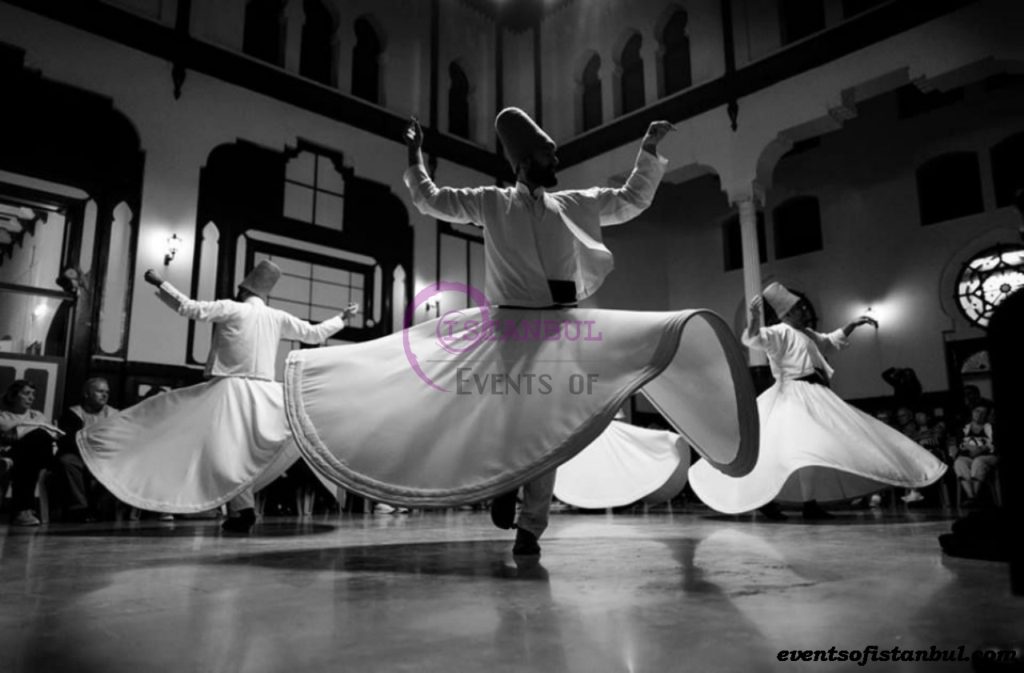
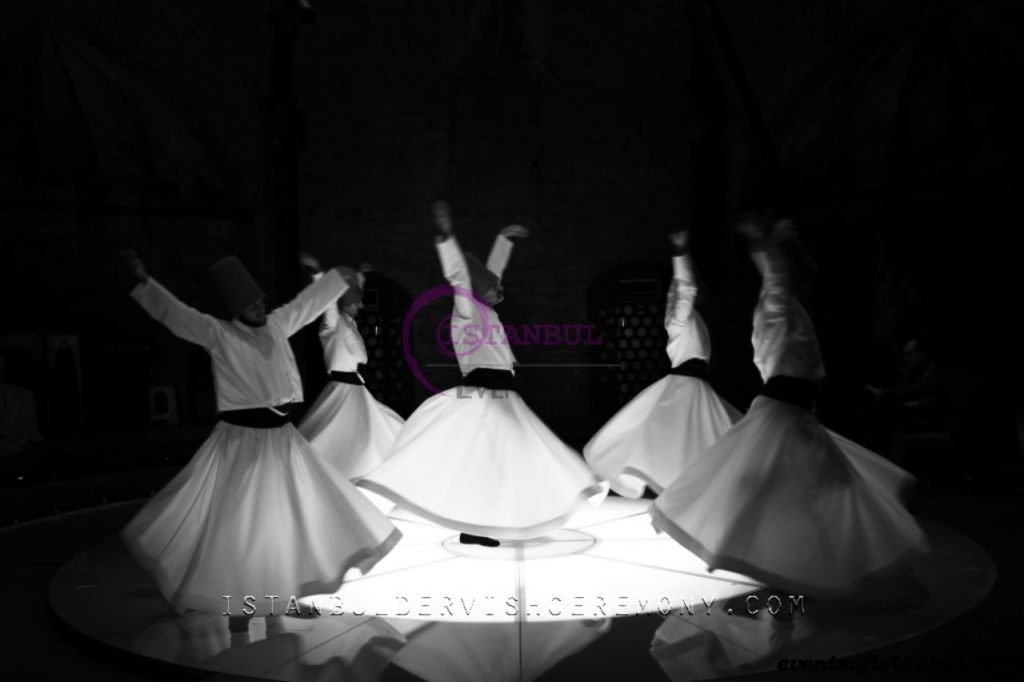
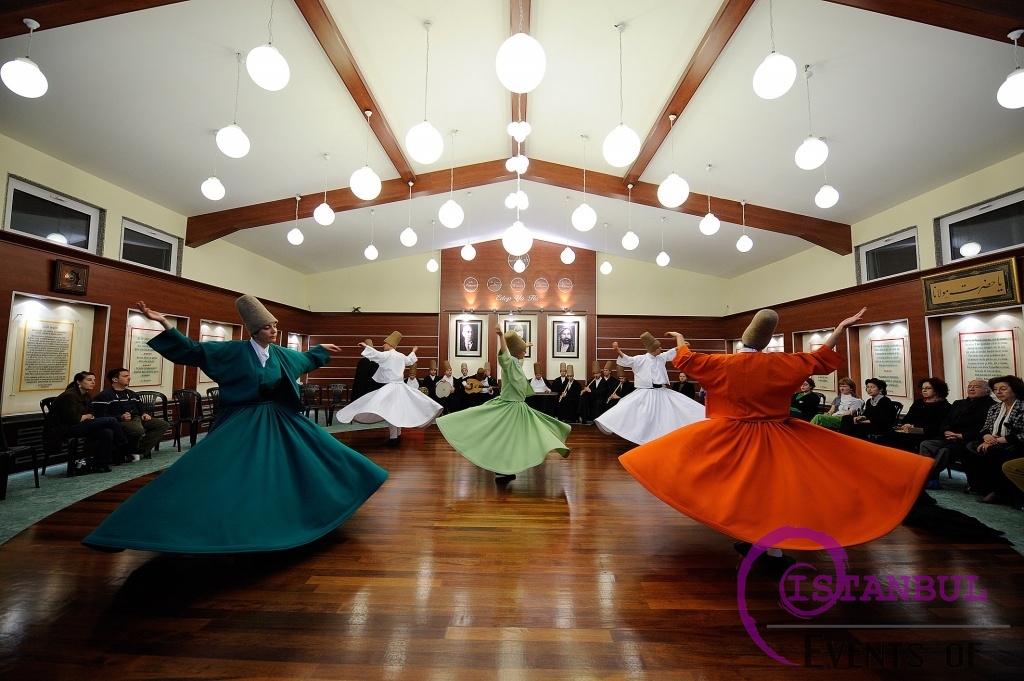
Whirling Dervish Ceremony in a Sufi Monastery Istanbul
Every Thursdays at 20:30 / Adult : 39 Euro – Child ( Age 06-12 ) : 29 Euro / Child ( Age 0-6): Free
For Reservation : +905442201022 – info@eventsofistanbul.com
The Mevlevihanes have been divided into two kinds: “Asitanes, which are authorized to give education for up to a 1001 days and secondly, Zaviyes”, which are relatively smaller and have no network for education. The former kind was more central, systematic, and better organized. Dedes could only be educated here and the architectural structure called Matbah-i Sherif, where the period of sufferance for a 1001 days was finalised. The postnishins in Asitanes held a higher status than those in Zaviyes. Zaviyes were founded in many cities and even in the villages of the Ottoman Empire. Up to the 17th century Zaviyes spread in accordance with the expanding boundaries of the Empire and were, therefore, able to educate wider circles. There were approximately 140 Mevlevihanes within the boundaries of the Empire.
MoseleumThe education in Islamic Mysticism was a harder task than the Medrese (theological university) education. This spiritual journey, called Seyru Seluk, also had to include “self-discipline”. Whosoever wished to enter this order of education was obliged to have parental permission, hold his majority, and be unmarried. The candidate, having been approved as bearing the appropriate character traits, was then informed of the difficulties along the path he was about to take. Upon his persistence, he would be seated at the place known as Saka Postu in the Matbah-i Sherif (kitchen) for theree days, observing the way of life in the House of Order. He was given food and water, but no one spoke to him so as to avoid any influence. In the case of a change of heart owing to mismatch on his part, he could leave without a word. However, if he decided to stay he would be led to Sheikh Efendi the Ascı Dede (Chief of Kitchen). Consequently he would be admitted into the order (discipline) at a Sikke (Mevlevi ritual hat) decoration ritual and then submitted to a “dede” for further training. Nevertheless, he would still be granted an 18 day trial period, during which he was to serve in his own garments. Nev-niyaz (a newly accepted apprentice) would stay in the Mevlevihane throughout the course of his a 1001 day training period. In the meantime he was to run errands in 18 different chores, each checked a different dede. These included the following: dish-washing to bed-making; table-service to house-cleaning; washing laundry to shopping; and finally to bathroom hygene, all of which were prerequisites of “self -discipline” training. Additionally to this intensive soul-training program, he would also receive fundamental schooling in literacy; adequate Arabic to enable him to read and comprehend the Quran, hadiths (prophets utterances), and fıkıh (knowledge of Islam); as well as adequate Persian and Turkish literature to enable him to read Masnawi. Also in accordance with his personal skills and aptitude, he could learn to play an instrument and/or sing in the rituals. He would often be encouraged to acquire an artistic skill such as hat, tezhip, or miniature.
Having completed the 1001 day training period, Can (fellow soul) would be granted the title of “Dede” at a special ceremony. Subsequent to his decoration, he would either be given a “cell” in that Mevlevihane or transferred to another Mevlevihane.
Hz. Mevlana’s Mevlevihanes, there would be outside followers attending lessons, learning the Sema ceremony, or merely sitting in the audience.
In summary, Mevlevihanes have always served as sort of conservatories or art academies, while giving education on Hz. Mevlana’s teachings along with theology and literature. Namely the Mevlevihanes in Istanbul have played a significant role in training master performers of Turkish Music.
Even though in the course of history the above defined education has obviously suited male students better, there have also been female dervishes (whirling members of the House), who held the position of postnishin, professor, and caliph, or some who acted on behalf of their underage sons. As it is revealed Eflaki in his book, The Hisory of Mevlevis, at the request of Ulu Arif Chalabi, Sefer Hatun (Sultan Veled’s daughter) enlightened many students, male and female alike; while Arif-i Hoslika, a Mevlevi caliph, taught in Tokat. Also, in Afyon, Destina Hatun, one of Divane Mehmet Chalabi’s grandchildren, was an authority in the Mevlevihane appearing in her Mevlevi garments and her sikke (Mevlevi hat). Later on, also in Afyonkarahisar, Kucuk Meahmed Chalabi’s elder daughter Gunes Han held the positions of sheikh and caliph. Another lady who served as sheikh was Gunes Han-ı Sugra, Kucuk Arif Chalabi’s daughter. Despite the changing conditions in the nation, female Mevlevis were licensed to wear “arakiyye” and “sikke”. They were even trained for the Sema, but they performed among themselves.
The Mevlevi life is based on “adab and erkan” (discipline and rules of conduct).
In their conduct, they are very kind, graceful, and discreet and they never go to extremes in behaviour or in speech. In salute, they place their right hand on their heart and incline their head slightly, implying “you are in my heart”. Even their handshake is peculiar to their discipline. They seize and kiss the back of each others hands, indicating mutual respect and equality. This is a greeting from ”soul to soul” and denotes equality of existence. Every part of the Mevlevi system of behavior bears a symbolical meaning, such as taking soft steps or showing respect to their daily appliances, and they can be observed in the act of the whirling dervishes in ‘Sema’ rituals, which are considered an extension of their daily lives.
Whirling DerwishSema (Ayin-i Sherif)
The Sema came to symbolize Mevlevi Order for it is the oldest ritual of the Order. Accompanied music and systemized certain rules, the “whirling” act has, in time, become more majestic, impressive, and appealing. Pir Adil Chalabi (died 1490), one of Hz. Mevlana’s great-grandchildren, more or less finalized the form, as performed today, of “Sema”. In time it was transformed into a ‘ritual’ Mevlevis.
Each act in this ritual bears a meaning and is carried out in grace. From the dervish’s garments to each of his movements, and from the particular shape of the Mevlevihane to the colours of the “post”, all is symbolic. For instance, the Semahane (Ritual Quarters) has a round floor to represent the universe; the colour red of the post on which the Sheikh sits is regarded as Hz. Mevlana Celaleddin-i Rumi’s abode, occupied the Sheikh Efendi on his behalf. The colour red symbolizes ¨unity with God¨; Hz. Mevlana united with his Allah at sunset. When the sun is rising and setting the sky turns red. The red colour of the Sheikh post similarly indicates “departing life on Earth” and rising into the spiritual life. The post, beginners of Mawlavi Order sit, is black. In his “journey of enlightenment” the new initiate comes to earn a white “post”.
As for the Semazen’s garments, his “sikke”, shaped like a tombstone, symbolizes the tombstone of his ego; his “tennure” (overcoat), the shroud of his ego; and his waistcoat, his ego itself.
As the Semazen begins the whirling ritual, he takes off his waistcoat. This indicates Semazen’s stepping into purification. His arms crossed on his chest represent God’s uniqueness. Opening both arms to the sides and revolving from right to left, he emerges as embracing the entire universe. His right hand with the open palm extended upwards indicates reception from God, passage through the heart’s path. His left hand with the palm extended downwards indicates fair distribution among fellow men. At this point, there is also emphasis on the dervish’s dissolving into divine existence.
SemaToday, a “Sema” begins with “Nat-ı Sherif”, music in praise of our prophet Hz. Mohammad, as composed Mustafa Itri Efendi (died 1712). The sound of “kudum” recalls God’s command, “Be!” while creating the cosmos. This is followed “ney”, the divine breath! The Universe has been composed and life has begun.
Semazens, as led “Sheikh Efendi”, follow a circular path around the Semahane. Each semi-circle symbolizes the material world while the other half stands for the spiritual worlds. The completion of these three acts called “Devr-i Veledi” implies an initial orientation for a spiritual journey. Taking off his upper-most garment, the Semazen begins revolving as he is granted permission his Sheikh.
As put forth my father Celaleddin Bakır Chalabi, “Sema”, consists of four parts, summarized as follows:
“Sema is a vassal’s, going towards the truth, elevation of the mind with love-wisdom, leaving his soul and disappearing in God spiritually and returning to vassalage as a man of maturity and a holy person.”
As the Sema concludes, both the dervish and the audience feel closer to the Almighty Creator. Their love for him strengthened, and their souls purified, they attain a contented and peaceful state of mind.
Our legacy of Mevlana comprises a significant portion of our culture, therefore, not only must we claim him, but we must also study and digest his knowledge and transfer our acquisition appropriately and most truthfully to future generations.

